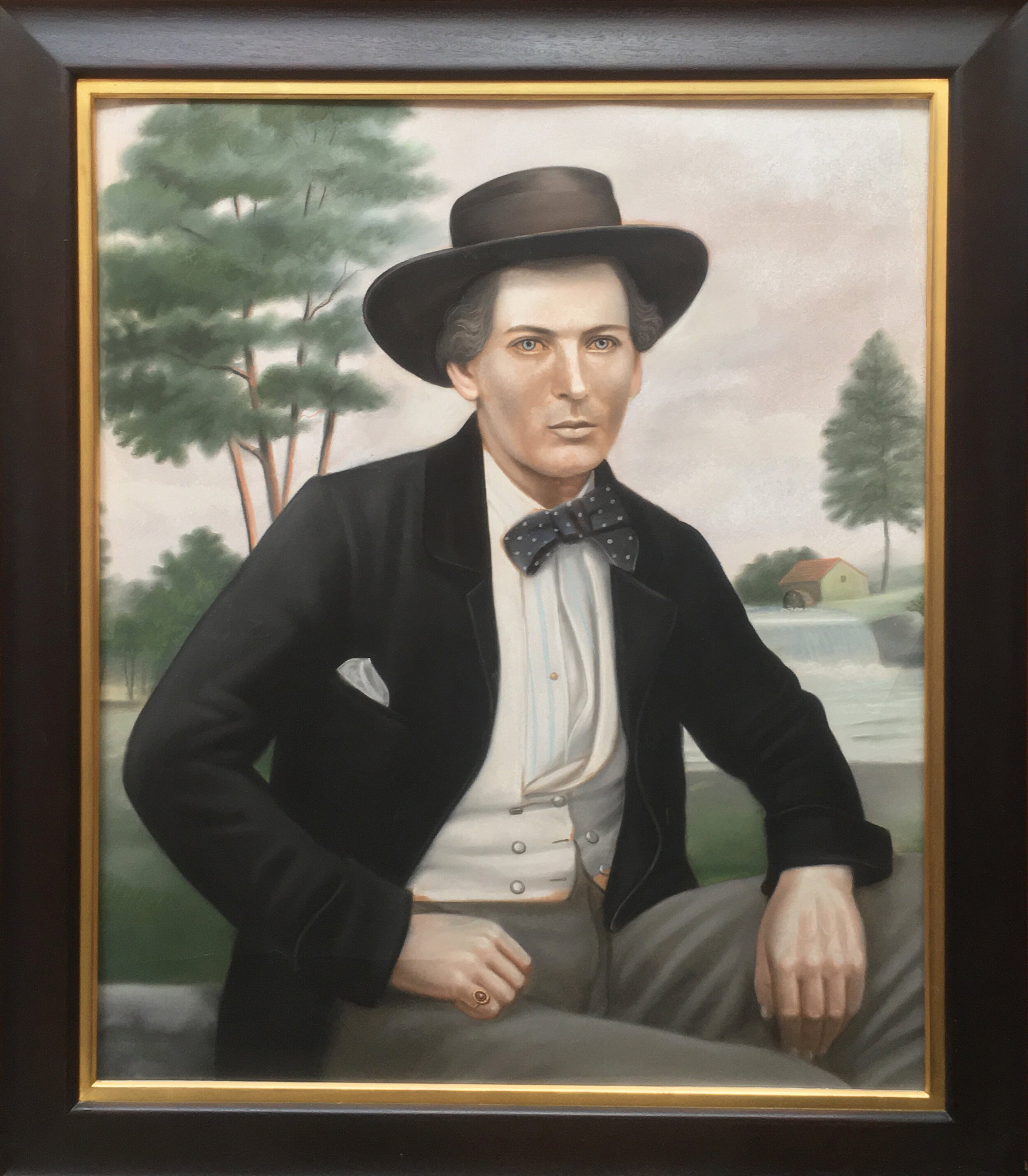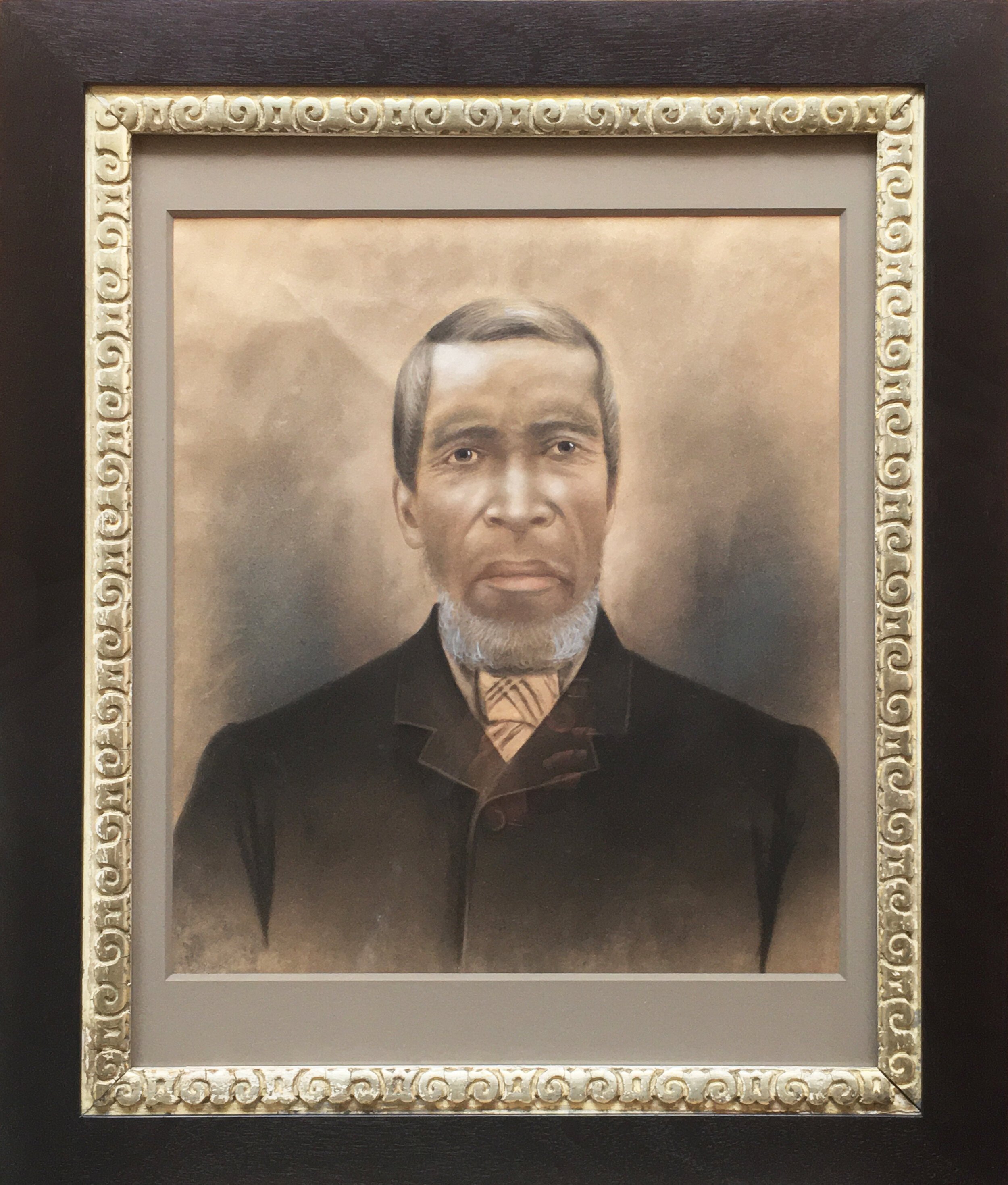David Winter, New York - MEET THE COLLECTOR Series Part Fifty-Nine
Having taken part myself in the Outsider Art Fair in New York, I have seen firsthand David Winter’s booth and the oddities he often shows in it. Late last year Frank Maresca told me more about David’s collecting habits, often with vernacular photography and folk art. So here’s part fifty-nine of my ‘Meet the Collector’ series, which is a little different from the norm.
Self-portrait with x-ray/photogram, American, c.1940
1. When did your interest in the field of outsider/folk art begin?
I started in 1993, selling the photographs of Karl Blossfeldt, a German ceramist and teacher who photographed magnified details of plant forms to illustrate to his students that the study of natural forms was basic to the making of art. I was a sculptor and responded to these images immediately. They, of course, had nothing to do with Folk or Outsider Art, but were my entryway into selling works on paper. Perhaps because I had, in my art schooling and career, looked at a great deal of "fine" art, I was drawn to things that had the formal or emotional power of art without the trappings of Art with a capital A. I discovered, for myself, the field of Herbarium collections. The graphic power of a real plant pressed and affixed to a page without "artistic" intervention was very compelling. Herbarium sheets led me to "Nature Printing", where real plants were used directly to make the image rather than an illustrator drawing the plant. In 1999 I put together, with the writer Andrea DiNoto, "The Pressed Plant", which at that time was the first book on the subject of Herbarium collection and Nature Printing.
Meanwhile, my interests in photography were drifting toward images that were "outside" of fine art, photographs that were made for other reasons. The majority of photographs have always been taken for documentary purposes; for insurance claims, criminal evidence, scientific research, trade catalogue illustration, etc. The makers of this documentary work would generally not have had any "aesthetic" training, yet their images could capture a whole world (albeit not always). And then there is the whole universe of the snapshot, folk art pure and simple. The collectors and dealers of snapshots and their book publishers make up an entire cottage industry outside of the fine art photography industry. I have a few tasty snapshots in my collection, but I haven't focused on them. I have focused on photographs that have been painted over, either lightly tinted or heavily over-painted with oil paint or pastel. Usually it was portraits that were enhanced this way, it was a way to make a "poor man's" painted portrait. This painting of photographs was done by folks for folks; for me this point ties this activity into the heart of folk art. It began at the beginning with daguerreotypes, then ambrotypes and tintypes and continued until well into the 20th century when it was folded into photo-shop. It is still possible to collect great examples in this field because they fall between the cracks of folk art and photography. So far neither of those fields has shown any real interest in the subject, so they are still affordable.
“Specimens of British Plants”, 1798, maker unknown
2. When did you become a collector of this art? How many pieces do you think are in your collection now? And do you exhibit any of it on the walls of your home or elsewhere?
I have been collecting prints and photographs and other graphic material since my college days - images that fed my always changing interests in art making. Collecting being a sickness, which I just barely maintain. I have hundreds of pieces in my personal collection and thousands in my business inventory. One always hopes that that one's lucky and successful decisions aren't too weighed down by the luckless mistakes that we write off as part of the process. My walls are crowded, my shelving loaded.
Like many in the outsider/folk field I am drawn to the crazy, extreme pieces, from outside of the boundaries. They get the juices running. But at the same time I am also interested in the quotidian, pieces that capture accidentally or without even trying the time and place in which they were made (i.e. the painted portraits discussed in the previous question.) There can be strong emotional pull to an old photograph, tapping into a time even before our own past, “Deja vu avant la lettre”, to misquote Yogi Berra. To possibly misquote Roland Barthes, we look for the “punctum” in the image, a detail or aspect that unlocks the meaning below the surface of the image. When the subtext spills out over the text, that’s when the fun begins.
Above images (L-R): Pastel on photograph, American, c. 1880, maker unknown and Pastel on photograph, American, c. 1890, maker unknown
3. Can you tell us a bit about your background? I believe you trained as a sculptor?
I was a sculptor in school and for about twelve years after. I did construction work by day. Then my energies changed course and led me into being a dealer of the eccentric ephemera that I collected. The aesthetic commitment to being a collector/dealer is almost as strong as to being an artist.
4. In 1993 you set up the gallery ‘Winter Works on Paper’ in New York, but you do not have a physical gallery space. Can you tell us about what the gallery showcases and why you decided to not have an actual space? Alongside this, you take part in the Outsider Art Fair in New York – so what kind of works do you show there, given that it has a particular focus that is different to your gallery and what is showcased on your website?
I have never had a public gallery space. I lacked capital and business acumen. I started out by taking booths at antique shows, buying and selling and meeting collectors and interior designers. Those were the good old days. As my interest in photography grew I moved into the world of shows devoted to photography. New York, Los Angeles and San Francisco were where the important ones were. Meanwhile I would go to the Outsider Art Fair as a viewer, looking a lot, buying a little, training my eye and gut. As my taste drifted even further outside the boundaries of politeness, I realized that I should take a booth at the Outsider Art Fair, I started in 2014. I take my most extreme pieces, like personal snapshots of spanking parties or photographs of clown shoes from a trade catalogue, the crazier the better. I avoid the aesthetically appealing. The audience doesn’t come to that fair looking for photography, but I’m making some headway. It’s a quirky and sophisticated crowd.
Do you do many other art fairs?
For many years I did the AIPAD show – that’s the biggest show in America and equivalent to the Paris photo one. I have done photo shows in LA, San Francisco and Santa Fe, but mostly just in New York.
5. A conflicted term at present, but can you tell us about your opinion of the term outsider art, how you feel about it and if there are any other words that you think we should be using instead?
That term is fine with me.
Envelope, snapshot, red pubic hair, c. 1940, maker unknown
6. Would you say you had a favourite artist or piece of work within your collection? And why?
It's hard to pick favorites but here's one. I picked up a blank envelope from a box on a flea market table (see image above). Inside the envelope was a snapshot of the naked mid-section of a woman's torso and a real tuft of red pubic hair. I imagine that it was meant to be sent to her boyfriend in the army. You can just make out the bald patch where it was harvested.
I have a few pieces by a truly "outsider" photographer, Richard Shaver. He was schizophrenic, in and out of mental hospitals, and an early writer of pulp science fiction. He believed that the histories of ancient, lost civilizations were encoded in rocks and that they could be unlocked and read. He began a project of photographing rocks and reading their messages. The texts that he wrote to accompany the photographs were truly looney.
Richard S. Shaver, photograph with caption, c.1960s
7. Where would you say you buy most of your work from: a studio, art fairs, exhibitions, auctions, or direct from artists?
I buy at flea markets, ephemera shows, book fairs and small internet auctions.
8. Is there an exhibition in this field of art that you have felt has been particularly important? And why?
The Metropolitan Museum of Art in New York has been ahead of the curve in showing vernacular photography. In 2000 they showed snapshots from the collection of Thomas Walther, I believe it was the first museum show of snapshots anywhere. In 2005 they put up a fantastic exhibition "The Perfect Medium, Photography and the Occult". The Met is lucky to have the far-sighted curator Mia Fineman. Her husband, Joel Smith, at the Morgan Library, has also been a pioneer in curating vernacular into the museum world. And Brian Wallis, formerly at the International Center of Photography and now with the Walther Collection, has had a leading role.
Actually, yesterday (23 January 2021) I went to see a groundbreaking show at the American Folk Art Museum that is very important to my interests in photography in relation to Folk and Outsider Art. Curated by and heavily borrowing from the collection of Bruno Decharme, it is titled “Photo Brut” and digs deep into the history of photography at it’s outer boundaries. There are whole bodies of work that I was unaware of, particularly from Russia and Eastern Europe. The show alters the maps of Outsider Art and Photography at the same time.
9. Are there any people within this field that you feel have been particularly important to pave the way for where the field is at now?
There were three photography dealers already selling vernacular photographs when I entered the field: Jack Banning, Jo Tartt and Gary Edwards. The collector Sam Wagstaff was a pioneer and the MoMA curator John Szarkowski saw the importance early on of vernacular images.
Playing cards, hand stenciled, from a Russian prison, c.1980s
10. You mentioned to me that you did a show featuring works from your collection a few years ago in the University of Toronto Arts Center? Can you tell us about this please?
I have been involved in a couple of exhibitions in art galleries. In 2013 I showed work from my collection at the Zieher-Smith Gallery in New York, it was also titled "Photo Brut". In 2015 I curated a show at the University of Toronto Art Center. Along with pieces of mine I hung works borrowed from Tony Oursler, a great artist and collector of photographs from the distant margins. I co-curated a show with Frank Maresca at his gallery in 2017. It was titled "The Altered Photograph" and it explored the many ways in which photos are manipulated after the fact.
11. What new stuff have you been getting into?
I have recently discovered playing cards that were hand-made in Russian prisons. I was aware of the book "Russian Criminal Tattoos and Playing Cards" (see image above) and was excited to be able to buy a group of sets. They are beautifully done, hand stencilled, and they have a strong Russian Folk flavor. I have also been collecting the paintings of a Ghanaian artist, Kwame Akoto. He calls himself "Almighty God" and paints accordingly.
Kwame Akoto, aka “Almighty God”, Self portrait, c.1990s?







